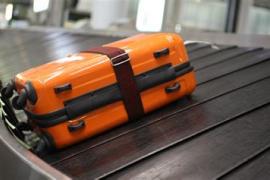
Including how to pack medicine effectively and the TSA rules you need to know.
Preparing for a trip should be part of the fun. After all, you get to plan outfits and make a packing list that matches all your activities. You get to plot out every moment of your adventure to come and even lay out a cozy outfit for the plane ride to get there the night before. However, if you’re someone who takes regular medication, you know there is at least one major stress point to preparing to travel: Figuring out just how to pack it.
From questions about prescription refills to TSA requirements, and right down to how much space you have in your luggage, packing medication for a trip can be tricky. But don’t stress too much, as we’ve got all the answers you’re looking for. Here’s what you need to know about traveling with medication.
Ensure you have refills available
Dr. Scott Kaiser, a family physician and geriatrician at the Pacific Neuroscience Institute in Santa Monica, California, shared with Travel + Leisure that travelers should confirm they have available refills on any essential medications before they leave for their trip. If they don’t, he suggested they call their doctor to request refills before departure, so it will be easier to fill a prescription during your trip if needed.
“When traveling, as with many things in life, it’s all about preparation—especially being prepared for the unexpected,” he said.
Kaiser added, because packing and preparing for travel can be stressful – and that stress can interfere with our memory – checklists and reminders are extremely helpful. “Either good old-fashioned paper or electronic reminders and alarms on your smartphone or other devices can be a lifesaver,” Kaiser said.
Always pack medication in carry-on luggage
Nobody anticipates their luggage getting lost or delayed, but as the U.S. Department of Transportation reported, 191,624 bags were “mishandled” in February 2022 alone. Rather than risk your medication becoming a part of this statistic, always carry it in your carry-on bag. Trust me — I am one of those 191,624 mishandled bag owners.
My mother, who lives with Parkinson’s, regularly flies to stay with me in New York City. She requires a significant amount of medication. However, it’s always placed in her bag, my sister’s, or mine. But following a last-minute flight cancelation and rerouting, my sister asked the gate agent to check our mom’s carry-on bag, believing this would help lessen the stress on our mom. Given the rush, my sister forgot to remove medication from our mom’s carry-on bag, and, lo and behind, this would be the day her bags would be left behind in Boston. So please, do as I say, not as I do.
Bring extra medication just in case
Just like you should always place medication in carry-on luggage, you should also always bring more medication than you anticipate needing. For example, we organize my mother’s medicine in a seven-day compartmentalized pill box, one for each day of the week. But, to ensure she can stay longer if she wants or needs, we pack a few extra days, so we’re never scrambling to fill (or stretch) essential medications. Need a hot tip? Buy a second, seven-day pill box to easily store your extra meds and keep things organized.
Understand TSA rules
The Transportation Security Authority (TSA) is famous for its liquid rules and security checks. But, Daniel Velez, a spokesman for the New England Region with the TSA, explained that airline passengers may always bring medically necessary liquids, medications, and creams in excess of 3.4 ounces (or 100 milliliters) in their carry-on bag.
He added, the TSA “strongly recommends that passengers clearly label their medication to facilitate the screening process.”
The TSA also compiled a helpful Disabilities and Medical Conditions page along with a Traveling with Medication video that should answer any lingering questions you may have.
What to do if your medication is lost
If your medication is lost or delayed during transit, immediately file a lost baggage claim with your airline before leaving the airport. Save the claim ticket (and take a picture of it), as you’ll need this to follow up on your claim.
If you have refills available on your medications (and you should, because you confirmed that before your trip, right?), you can transfer prescriptions to a local pharmacy, particularly if you use a chain like Walgreens or CVS. If you don’t have refills available, you’ll need to call your prescribing doctor.
Keep in mind that some medications cannot be issued without a new prescription. In this case, pharmacists will usually refer patients to a local urgent care facility. If the medication cannot be refilled for another 30, 60, or 90 days, you may have to call your health insurance provider to request an early refill authorization. Again, avoid this by checking in with your doctor before your travels, or at the very least, have all these numbers (your doctor, your insurance, and the number of a local urgent care) saved in your phone before take off, just in case. Because, as the saying goes, “luck favors the prepared.”
source: https://www.travelandleisure.com/how-to-fly-with-medication-7093199






